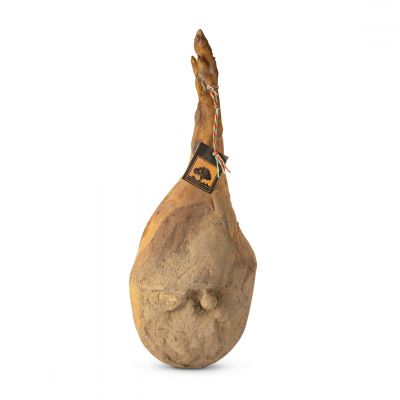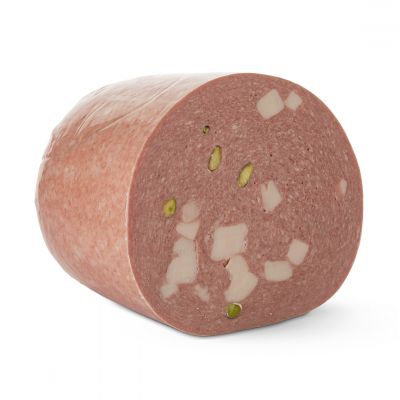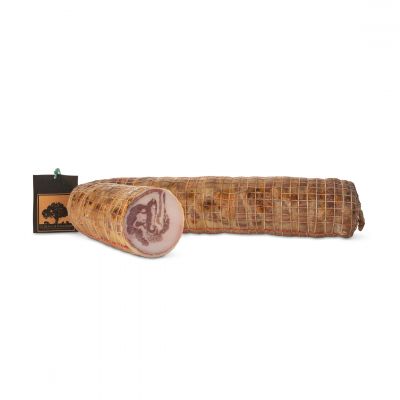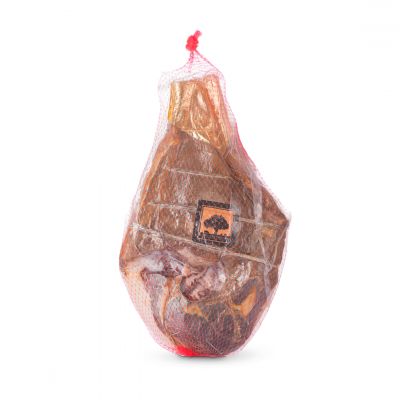From the woods to the cutting board, elegant and tuscan in the heart: let’s talk about the Ruffiana, do you remember it?
THE COLUMN
Over the course of the year and in the various issues of the 2021 magazine, I will accompany you to the rediscovery of some products that Valsana has selected with great enthusiasm but which over time have been gradually forgotten.
Products we are very fond of, for their organoleptic qualities, but above all for their ability to let us tell stories, territories and virtuous projects.
This section aims to bring the spotlight back to these products and prevent them from disappearing from our assortment.
THE BACKGROUND
Let’s start with Ruffiana: during my first months in Valsana at the preview of the Sapori event I had the pleasure to meet David Orlandi. Thanks to his stories he allowed me to get to know his family business, Le Selve di Vallolmo.
From the first words of David, full of passion, pride and “Tuscanity”, I understood that I was facing with a valuable project aimed at enhancing the territory, products and biodiversity.
I come from a family of Abruzzo butchers and for this reason I know these dynamics very well.
The company raises pigs of Grigio del Casentino, a native Tuscan breed, in a semi-wild state: they are free to root in the woods, run, move and feed on foods that the territory gives, such as acorns and chestnuts.
During the colder seasons their diet is supplemented only with natural elements including cereals and legumes processed by the mill inside the farm. Pigs live like this for about 15 months, until they reach a weight of between 160 and 180 kilos, before being slaughtered.
This farming method, in addition to reducing the environmental impact and guaranteeing animal welfare, ensures that the Grigio del Casentino meats have valuable organoleptic and nutritional characteristics, such as the fat defined as noble because it is rich in Omega 3, just like that of the Cinta Senese.
And with these excellent quality meats David, together with his family, produces very tasty cured meats, including Ruffiana.
THE PRODUCT
Ruffiana is a tuscan salame of average size, produced with selected meats, small grain minced. It is seasoned with Cervia salt, black pepper and wild fennel, both seed and flower.
After being seasoned all the mixture is put into natural guts and from this moment Ruffiana will age for at least 45 days at controlled temperature and humidity. In this delicate phase, the great care of the artisan allows the salame to ferment without defects and become round in taste and perfume. This is how this little gem is made, ready to be sliced and served.
The slice is well compact and offers a mix of perfumes in which the wild fennel stands up. When biting, it is melting in the mouth and mild thanks to the presence of the fat, everything elegantly combined with the aromatic notes of the herbs.
What else to say, this is a Tuscany masterpiece... My advise? Just for this time, let yourself “infinocchiare” which in english means “to be deceived”.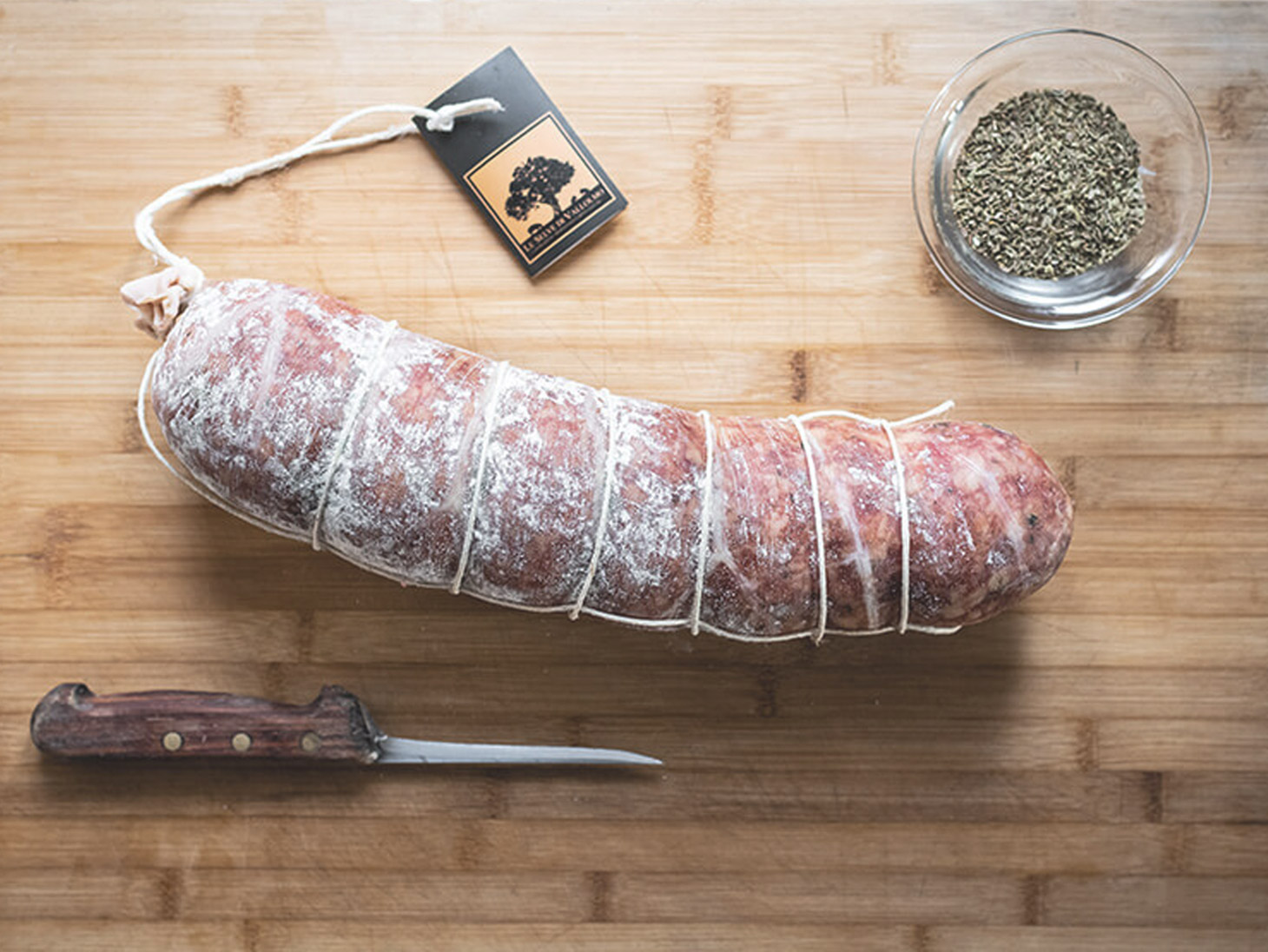
5 THINGS TO REMEMBER ABOUT THIS PRODUCT
1. PRODUCER
Selve di Vallolmo farm was founded during 80s by Claudio Orlandi to raise Large White pigs. In the 2000s Claudio felt that he need improve his business so he started making charcuterie.
Since the first steps he aimed for the high quality of raw material: in fact one of the main mission of the company is preserving and promoting Grigio del Casentino breed.
Il Grigio del Casentino è una razza suina autoctona toscana che nasce dall’incrocio di maiali Large White e maiali di razza Cinta Senese o Mora Romagnola.
2. BREED
The Grigio del Casentino is an indigenous Tuscan pig breed that comes from the cross between Large White pigs and Cinta Senese or Mora Romagnola pigs.
3. GEOGRAPHY
Selve di Vallolmo is located in Poppi (AR), in the est of Tuscany within the Casentinesi Forest National Park.
The valley is surrounded by forests, is crossed by the Arno river and is home of ancient medieval villages and mystical places such as the Hermitage of Camaldoli and the Franciscan sanctuary of La Verna.
If you are in the area take a trip to these lands and you will be enchanted!
4. HISTORY
In Tuscany, Finocchiona is also called Ruffiana from the italian verb “arruffianare” which in english means “to deceive”: the innkeeper used it to seduce the customers while offer them mediocre wines.
A stratagem also used by farmers at the end of the 19th century who, to cover up the defects of the wine to be sold to the noble citizens, always offered a few slices of Finocchiona before the wine tasting!
5. SUGGESTIONS
For a delicious bruschetta, take a slice of bread, season it with a good extra virgin olive oil, cut some slices of Ruffiana, fill a glass of red wine and that’s it. If on the other hand, you want to juggle in the kitchen, you can use Ruffiana to enrich a quiche or a potato flan.
Gianluca Di Lello
Export Manager




